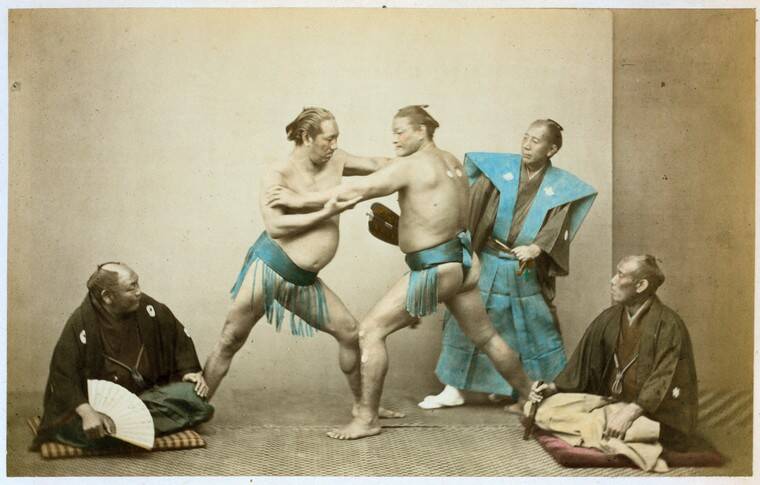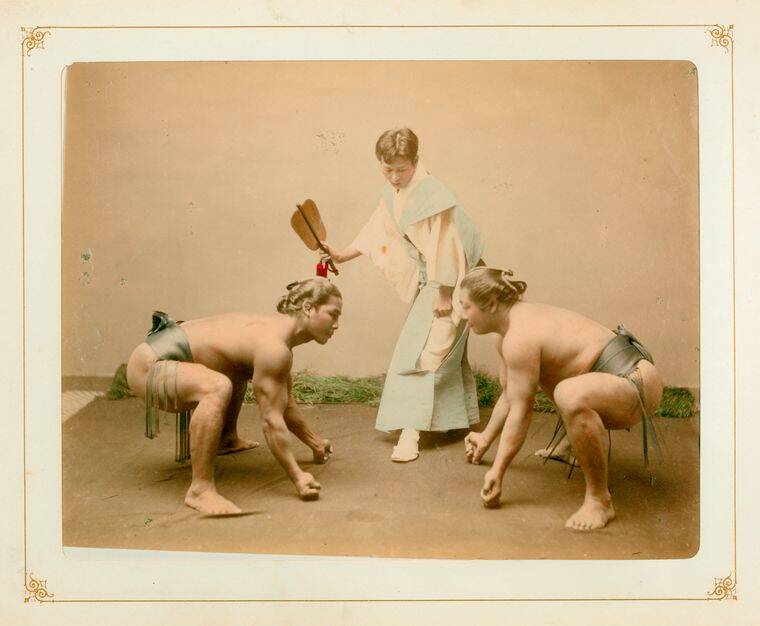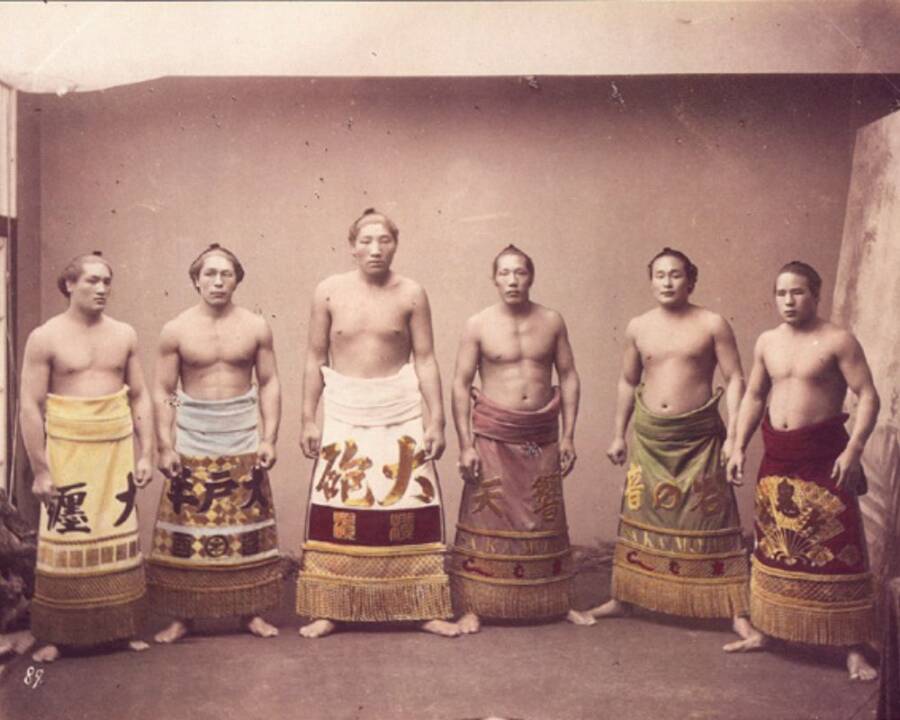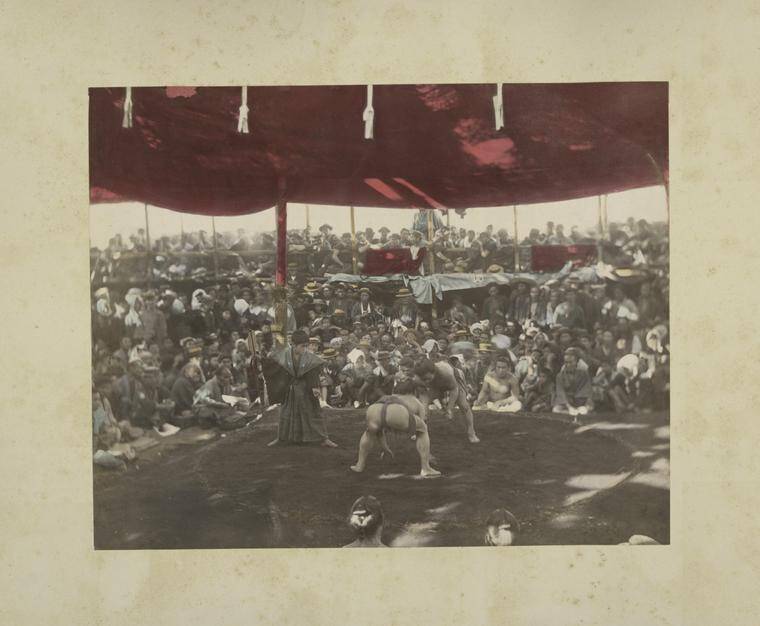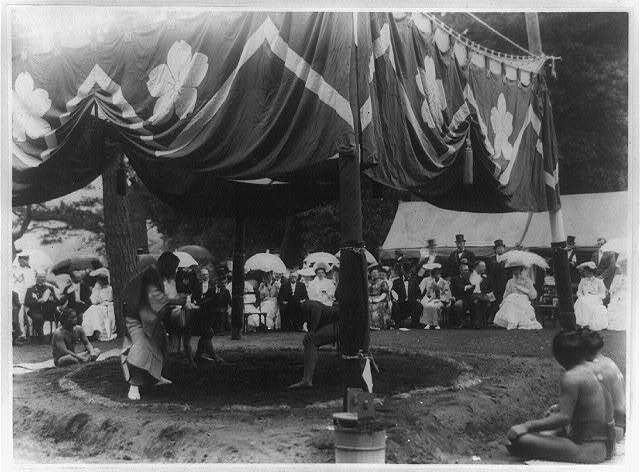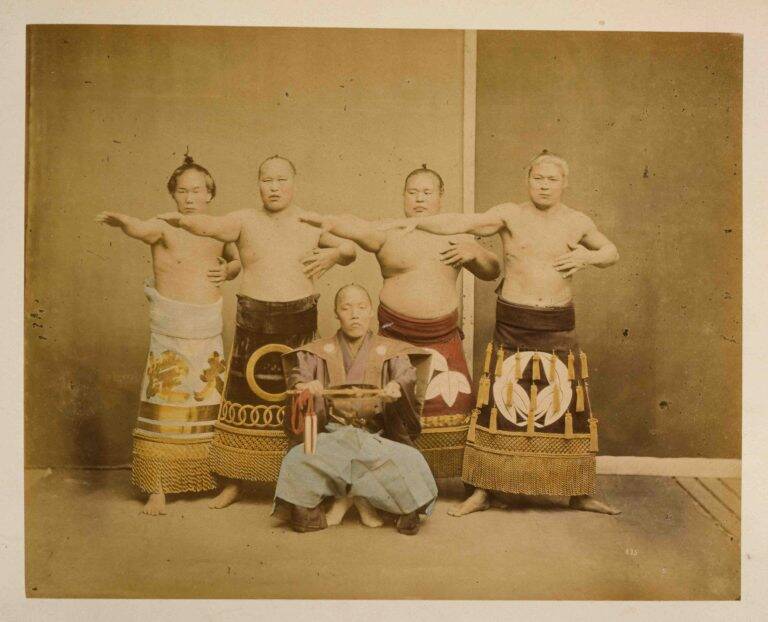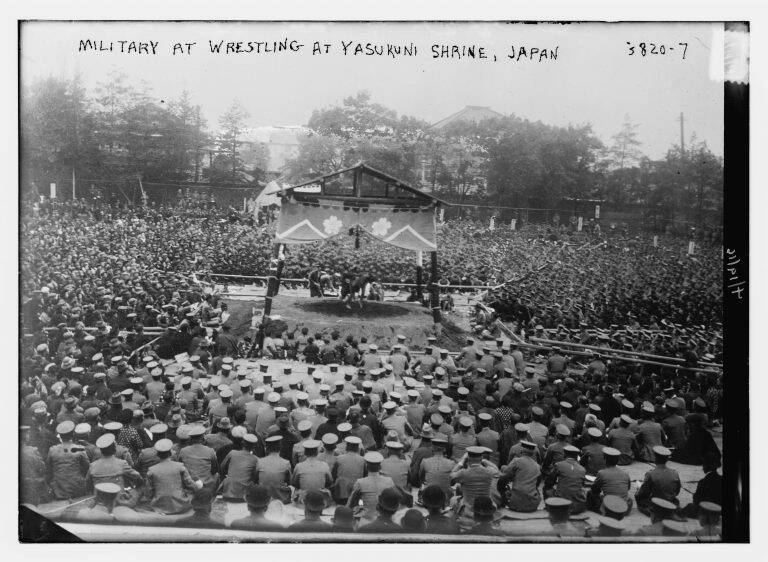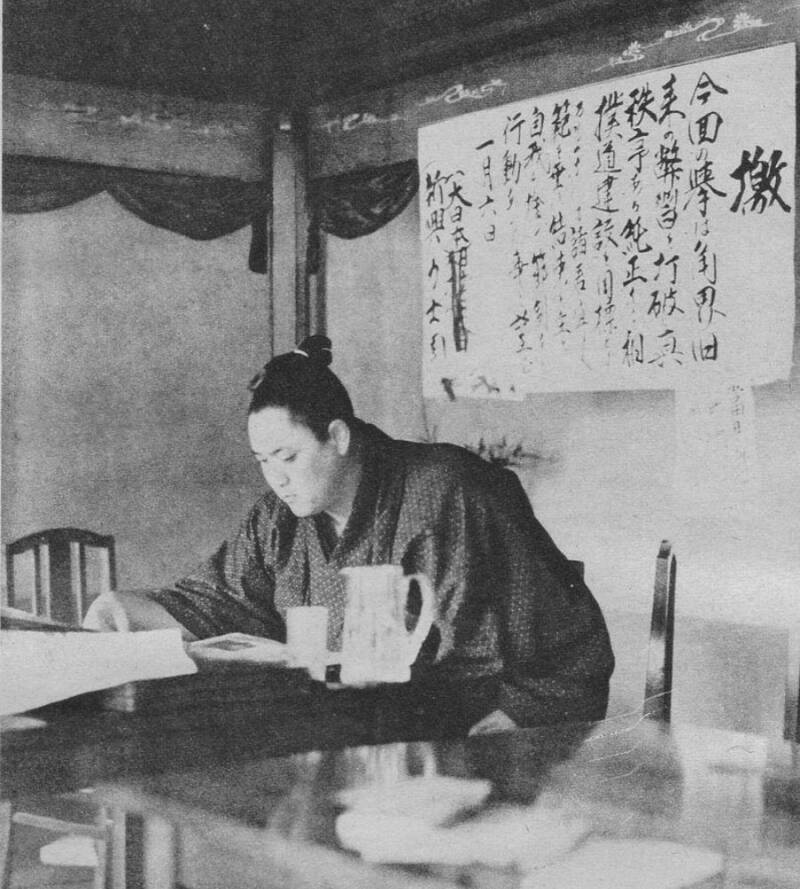Although sumo wrestling is Japan's national sport today, it started as a Shinto harvest ritual more than 1,500 years ago and once even served as a form of combat training for samurai.
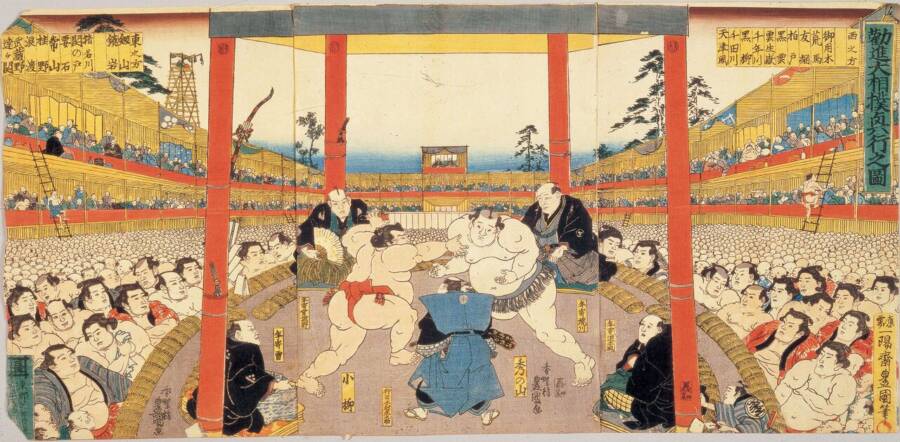
Public DomainA colorful woodblock print depicting the Kanjin Grand Sumo Tournament during Japan’s Edo period, circa 1843.
As the national sport of Japan, sumo wrestling has a long and intricate history.
The sport involves wrestlers, called rikishi, attempting to force each other out of a circular ring or make their opponent touch the ground with any part of their body other than their feet. Sumo’s origins lie in religious practices, but it developed into a formalized sport with a unique culture, including strict training regimens and ceremonial elements.
Sumo wrestling was initially part of Shinto rituals honoring Japanese gods and celebrating harvests. According to mythology, sumo matches determined the rulers of Japan, with the god of thunder, Takemikazuchi, prevailing in the earliest legendary match.
Over time, sumo evolved from a violent sport to a more regulated and respected competition. By the 17th century, many wrestlers lived in training stables called heya, and public matches became commonplace. In the 1800s, sumo’s popularity waned due to Western influences, but the sport once again became a symbol of Japanese nationalism towards the end of the Meiji period (1868 to 1912).
The 20th century saw the establishment of the Japanese Sumo Association, formalizing the sport with organized tournaments. Sumo continued to rise in popularity, and it gained global exposure through world tours. Today, sumo remains one of Japan’s most iconic and popular sports.
Below, read more about the history of sumo wrestling. And above, look through 33 photos that show how Japan's national sport has changed over time.
The Origins Of Sumo Wrestling In Japan
The first mention of sumo wrestling appears in an eighth-century manuscript about ancient Japanese myths and legends. The practice most likely originated as a form of worship or celebration for a fruitful harvest period, but it eventually evolved into a competitive sport.
According to Japanese mythology, two deities, or kami, named Takemikazuchi and Takeminakata held a sumo match to determine who would have dominion over the Japanese islands. Takemikazuchi would ultimately reign supreme.

Public DomainAn 1885 depiction of Nomi no Sukune wrestling with Kuyehaya.
The first match between mortals allegedly took place in 23 B.C.E. According to the Nihon Shoki, a historical record of ancient Japan published in 720, a man named Kuyehaya claimed to be the strongest person in all the land. When Emperor Suinin heard of this, he requested that Kuyehaya fight against a simple potter named Nomi no Sukune.
"The two men stood opposite to one another. Each raised his foot and kicked at the other, when Nomi no Sukune broke with a kick the ribs of Kuyehaya and also kicked and broke his loins and thus killed him."
Nomi no Sukune easily defeated Kuyehaya, and today, he's known as the "founder of sumo." The story showcases sumo wrestling's violent origins. Until the Middle Ages, wrestlers often fought to the death, and there were no real rules about combat. It wasn't until the sport became popular among aristocrats and nobility that it became more regulated. Today, rikishi are forbidden from punching or kicking their opponents and may only slap them, trip them, or grab them by their belts.
How Sumo Wrestling Evolved Over The Centuries
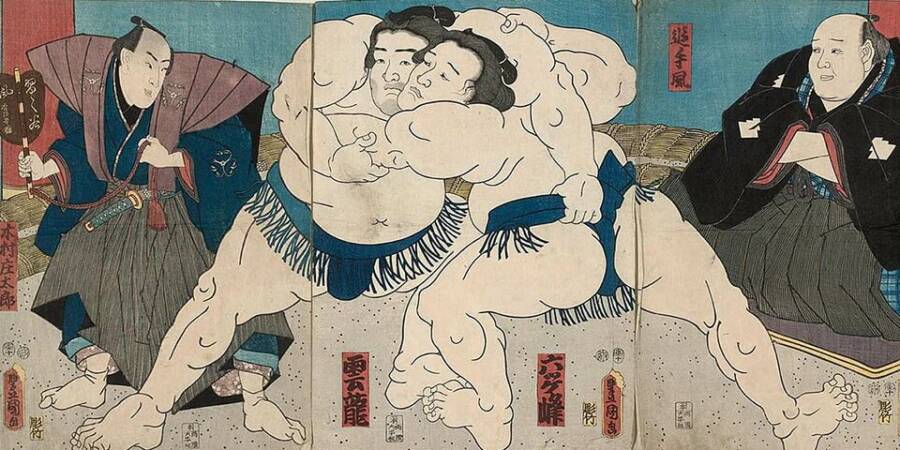
Public DomainAn 1850s print of sumo wrestlers Mutsugamine Iwanosuke and Unryū Kyūkichi.
During the Edo period (1603 to 1867), sumo wrestlers would hold public matches for the common folk. However, these matches sometimes caused fighting in the streets, and the sport was temporarily banned. An official organization soon developed to provide more structure, and many of the modern elements of sumo wrestling began to take shape. Rikishi started living and training together in stables called heya.
As Japan's feudal system came to an end in the 19th century and Western influence seeped into the nation, sumo wrestling became seen as an embarrassing relic of the past. However, Emperor Meiji organized a popular tournament in 1884 that restored sumo as a beloved national sport in the eyes of the Japanese people.
During the Meiji period, Japan was trying to carve out its own sphere of influence to compete with rising Western imperialism, focusing on promoting nationalism and embracing a defined Japanese identity. Ultimately, sumo was selected as Japan's national sport to further these aims.
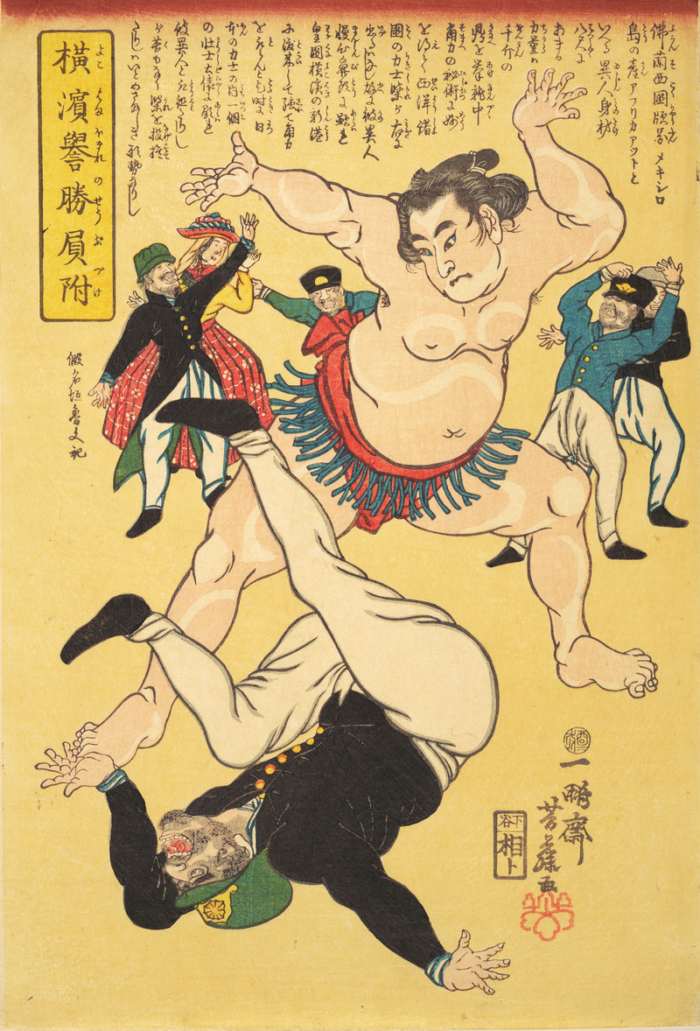
Public DomainThis 1860s print of a Japanese sumo wrestler defeating a foreigner illustrates the rise in nationalism during the 19th century.
In the early 20th century, sumo wrestling reached new levels of popularity. Rivalries between prominent rikishi were reported in magazines, newspapers, and other media outlets. In 1925, the Japanese Sumo Association was formed, providing the sport with an organized governing body that scheduled official tournaments. Japanese-Americans also held their own matches in the United States.
After the Japanese invasion of Manchuria in the 1930s, nationalist sentiments strengthened, bolstering the popularity of sumo wrestling once again. Sumo wrestlers even traveled to occupied zones to perform for Japanese troops. By the 1960s, sumo wrestlers were going on world tours and showing off their unique sport to countries around the globe.
Japan's National Sport In The Modern Age
Today, rikishi still live in training stables, where younger wrestlers make food for their higher-ranked counterparts. Since there are no weight classes in the sport, sumo wrestlers use their size to their advantage, and they sometimes eat up to 7,000 calories a day to maintain their physique.
One of the most popular meals is chanko-nabe, also known as "sumo stew," which is made of several pounds of meat and as many types of nutritious vegetables as possible. Yamamotoyama Ryūta, the heaviest Japanese sumo champion in history, told Sliced in 2022, "Chanko-nabe is very healthy, fresh, and helpful for recovery. After hours of exhausting training, it's important to digest as much nutrition as possible."
"Even though we eat a lot of calories," Yama continued, "we make sure we eat well, avoiding junk food and sugar. It's an urban myth that sumo wrestlers eat up to 20,000 calories a day... That's over 35 Big Macs a day. That's highly implausible for such elite sportsmen."
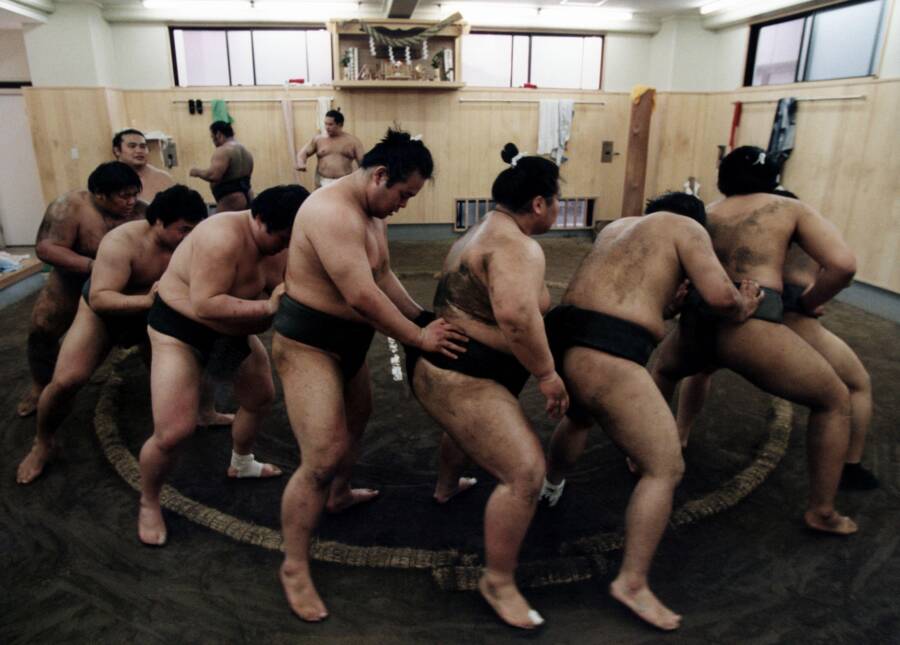
NB/ROD / Alamy Stock PhotoSumo wrestlers perform a ritual dance after a day of training at Tokyo's Tomozuma Stable in 1998.
Other traditions from sumo's past also continue, such as the iconic topknots of the rikishi. These harken back to the time of the samurai, when sumo was used as a form of combat training and the hairstyle helped secure the warriors' helmets on their heads. Their traditional loincloths date back even further to the Shinto origins of the sport, when wrestlers believed that competing in as little clothing as possible showed the deities that they weren't cheating.
In this way, despite the fact that sumo wrestling has changed drastically in other ways over the centuries, it holds onto many of the unique aspects that skyrocketed it to popularity as Japan's national sport.
After reading about the history of sumo wrestling, look through 50 photos from Japan's Imperial Era. Then, learn about the classic fart battles of 19th-century Japan.
